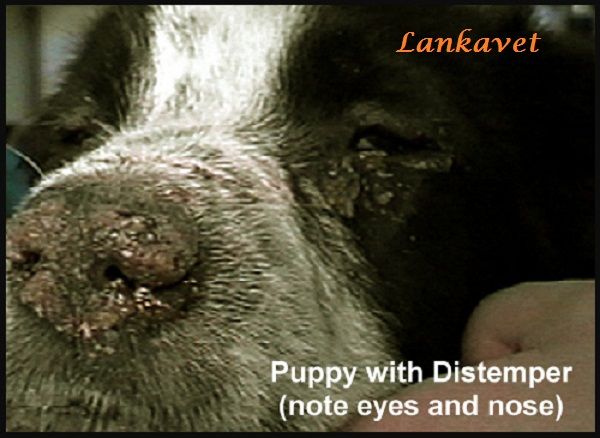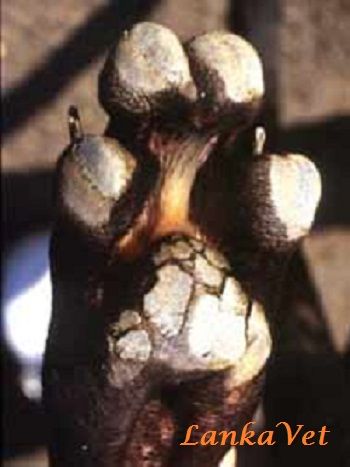
Canine Distemper is a highly
contagious viral disease which affects dogs. This virus can affect a wide range
of organs including the skin, brain, eyes, intestinal and respiratory tracts of
dogs, therefore the distemper describes as a generalized disease. The highest
incidence of the disease occurs in unvaccinated puppies 6 to 12 weeks of age,
at which time maternal antibodies fall below protective levels. The distemper
virus attacks brain cells and cells that line the surfaces of the body,
including the conjunctiva, the mucous membranes of the respiratory tract, and
the gastrointestinal tract. The disease is severe in malnourished dogs. Death
rates may be as high as 75%.
Transmission
 Infected animals shed canine
distemper virus through their all body secretions such as urine, ocular and
nasal discharge. The virus is
transmitted through the air while coughing the infected animals. Inhalation of
the virus is the primary source of exposure. Half the dogs infected with canine
distemper virus show mild signs of illness or no signs at all.
Infected animals shed canine
distemper virus through their all body secretions such as urine, ocular and
nasal discharge. The virus is
transmitted through the air while coughing the infected animals. Inhalation of
the virus is the primary source of exposure. Half the dogs infected with canine
distemper virus show mild signs of illness or no signs at all.Clinical Signs
First stage
- Fever - 103° to 105°F
- Loss of appetite
- Watery discharge from eyes and nose
- Dyspnoea – Difficult to breath
- Pneumonia
- Listlessness - Lethargic
- Ocular and nasal discharge which is thick, purulent and sticky
- Hyperkeratosis - Nose and foot pads thickened
- Severe dehydration
- Dry cough
- Blisters of pus on the
abdomen

Second stage
- Occurs 2-3 weeks after the onset of the disease
- Neurological disease develops and it may be acute or chronic –Encephalitis
- Hind quarter paralysis
- Head shaking and chewing movements of the jaws
- Epileptic seizures - dog runs in circles, falls over, and kicks around wildly
- Appears to be blind and confused

Hind quarter paralysis
Diagnosis
- Clinical Signs
- Laboratory tests
Treatments
- No specific treatment for canine distemper only supportive treatments could be done to prevent vomiting and diarrhea
- Antibiotics are used to prevent secondary bacterial infections, even though they have no effect on the distemper virus
- Intravenous fluids are administered to prevent dehydration
- Use anti-seizure medications to counteract neurologic signs - Sedatives
Prevention
- Proper sanitation
- Vaccination
1. Primary
vaccination - 08 weeks of age
2. Booster
vaccination - 14 weeks of age thereafter annualy


No comments:
Post a Comment